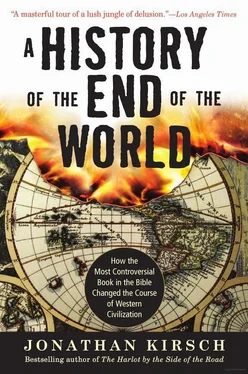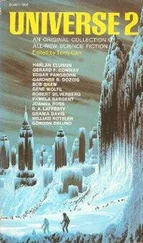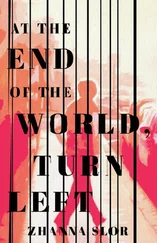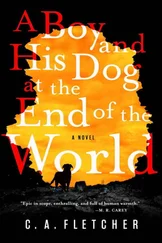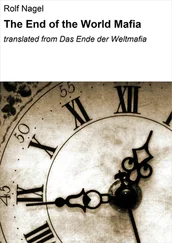Along with acts of martyrdom and feats of arms, the Jewish people of the second century B.C.E. offered another kind of resistance to the foreign army of occupation and their native collaborators. A few charismatic and visionary authors began to tell tales that were intended to strengthen the resolve of the “Pious Ones” who refused to compromise their true belief. They draped the stories in veils of mystery, and they conjured up strange visions, some terrible and some tantalizing. And they spiced the stories they told with a longing for—and a sure promise of—a day of bloody revenge against their enemies.
The texts that were composed during the days of the Maccabean Revolt “are born out of a sense that the world is out of joint,” according to historian John J. Collins, one of the leading scholars in the modern study of apocalypticism, and they were “written to exhort and console.” 43Indeed, the tales of revenge and redemption in the end-times can be seen as a tool of propaganda in both a shooting war and a culture war. And, as we shall see, they were the earliest stirrings of the apocalyptic tradition in Judaism and Christianity that would one day result in the writing of Revelation.
One repository of the early apocalyptic tradition is the book of Daniel. The texts that are collected and preserved in Daniel are set in Babylon in the early sixth century B.C.E., some four centuries before the Maccabean Revolt. The monarch who is depicted in Daniel is Nebuchadnezzar, the Babylonian emperor who conquered Judah, destroyed the Temple at Jerusalem, and carried the Jewish royals, priests, and gentry into exile. But scholars agree that the various stories in the book of Daniel were actually composed and compiled in the second century B.C.E., and Nebuchadnezzar would have been recognized by the original readers of the book of Daniel as a stand-in for Antiochus the Madman.
“If the author wished to hearten the faithful in the time of affliction and persecution, what better medium could he have chosen?” writes H. H. Rowley. 44“They were entertainment, as well as charged with a message, and so they could easily be remembered and passed from mouth to mouth.” 45
Indeed, a certain fairytale quality suffuses the book of Daniel. Among the exiles in the court of Nebuchadnezzar, we are told, are young Jewish men of noble blood, “fair to look on, and skillful in all wisdom,” and Daniel is the fairest and wisest of them all. 46When the pagan king threatens to put Daniel to death unless he reveals the meaning of a dream so mysterious that it has baffled all the royal astrologers, enchanters, and magicians, Daniel prays to the God of Israel for a revelation. God grants Daniel’s prayer and discloses the meaning of the dream.
“Blessed be the name of God, for wisdom and might are his,” says a thankful Daniel. “He revealeth the deep and secret things, he knoweth what is in the darkness.” 47
The “secret things” that God reveals to Daniel are quite at odds with what the other biblical authors say about the fate of the Chosen People. Elsewhere in the Bible, as we have seen, God himself is identified as the one who sends Nebuchadnezzar and other foreign invaders to afflict the children of Israel, and all because of their own apostasy and harlotry. Here and now a new idea enters the Bible: the Jewish people are afflicted not by God on high but by evildoers on earth, and God will one day rescue them from their oppressors by sending a savior to defeat the enemy and establish an eternal kingdom of divine peace and perfection for the pious Jews who remain faithful to the Torah.
“Then the holy ones of the Most High will receive the kingdom,” Daniel is told by a heavenly emissary, “and possess the kingdom forever—forever and ever.” 48
The idea is memorably expressed the “night visions” that Daniel describes. Four nightmarish beasts, “dreadful and terrible,” crawl out of the sea and range over the earth, devouring all in their path. God, depicted here as the “Ancient of Days,” a white-haired king on his celestial throne, attended by angelic minions numbering a “thousand thousands,” bestirs himself to defeat the last and most dreadful of the beasts, a monster with ten horns, iron teeth, and brass claws: “And as I looked,” affirms Daniel, “the beast was slain, and its body destroyed and given over to be burned with fire.” At last, a celestial savior—“one like unto a son of man”—is sent to earth on a cloud. “And there was given him dominion, and glory, and a kingdom,” writes Daniel, “an everlasting dominion, which shall not pass away.” 49
All of these motifs—God enthroned in heaven, the angels who serve him, and the self-evidently symbolic monsters who stalk the earth—will be reworked and repurposed in the book of Revelation. The book of Daniel is perhaps the single most important of the various “models and sources” that the author of Revelation seems to have invoked in his own writings. And that’s exactly why we must try to understand the methods and meanings of the book of Daniel before we can hope to solve the even deeper mysteries of Revelation.
The key to Daniel—and all of the apocalyptic writings, including the book of Revelation—is found in the simple fact that its night visions are not to be taken literally. Indeed, Daniel himself says so.
“The vision of my mind alarmed me,” he writes. “I approached one of the attendants and asked him the true meaning of all this.” 50And the angelic “attendant” patiently explains that the beasts are, in fact, purely symbolic. “This is what he said,” explains Daniel. “These great beasts, four in number, mean four kingdoms will arise out of the earth.” 51The fourth kingdom, symbolized in the vision by a beast with ten horns, will endure through the reign of ten powerful kings, but it will finally be destroyed. “And the kingdom and the dominion shall be given to the people of the saints of the Most High”—that is, the Jewish people, or, at least, the “holy ones” among them who have remained faithful to the Covenant. 52
Once we are given permission to read the book of Daniel as a symbolic rather than literal account of history—and, in fact, we are instructed to do so by the author himself—new and illuminating meanings emerge from the otherwise mysterious text. Indeed, the book of Daniel speaks directly to the experience of the Jewish people who were confronting both the excesses of Antiochus the Madman and the seductions of Hellenism at the time when the book was first written and first read—the very men and women whom the author seeks to “exhort and console.” To put it bluntly, the book of Daniel, like much else in the Bible, is propaganda, not prophecy.
Thus, for example, Daniel refuses to eat the rich food and fine wine offered by the court chamberlain of the pagan emperor, and contents himself with a daily ration of beans and water—an example of right conduct for Jews who were being invited (or compelled) to break the laws of kashrut. When Nebuchadnezzar decrees that a golden idol be erected and worshipped, the readers of Daniel were meant to think of Antiochus, who defiled the Holy of Holies in the Temple at Jerusalem by installing an idol of Zeus. And when Daniel’s three companions—Meshach, Shadrach, and Abednego—choose death by fire rather than bow down to the idol, they are spared from suffering by a guardian angel who joins them in the furnace, a consoling thought to any Jewish man or woman facing the tortures that are described by Josephus or the author of the book of Maccabees.
“Lo, I see four men, walking in the midst of the fire, and they have no hurt,” declares the pagan monarch, who is scared out of his wits by what he beholds, “and the appearance of the fourth is like a son of the gods.” 53
Читать дальше
